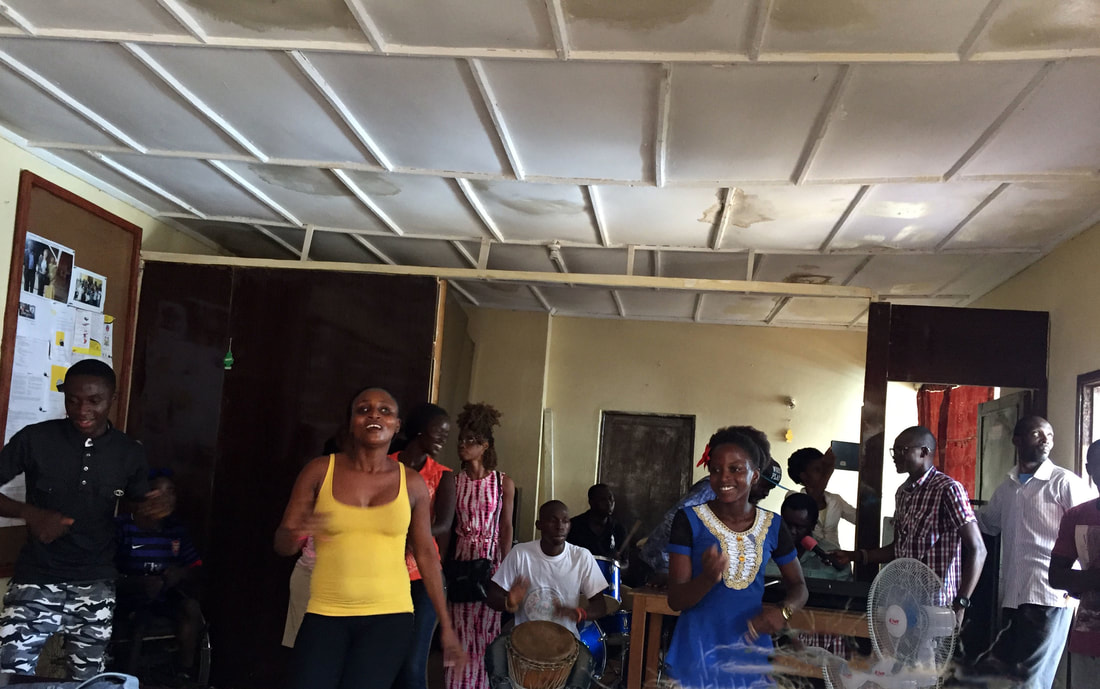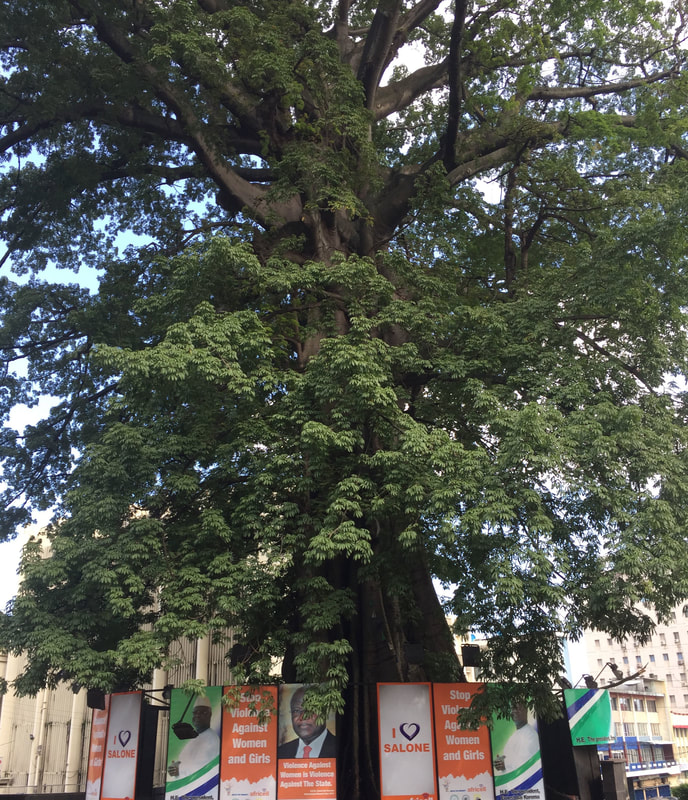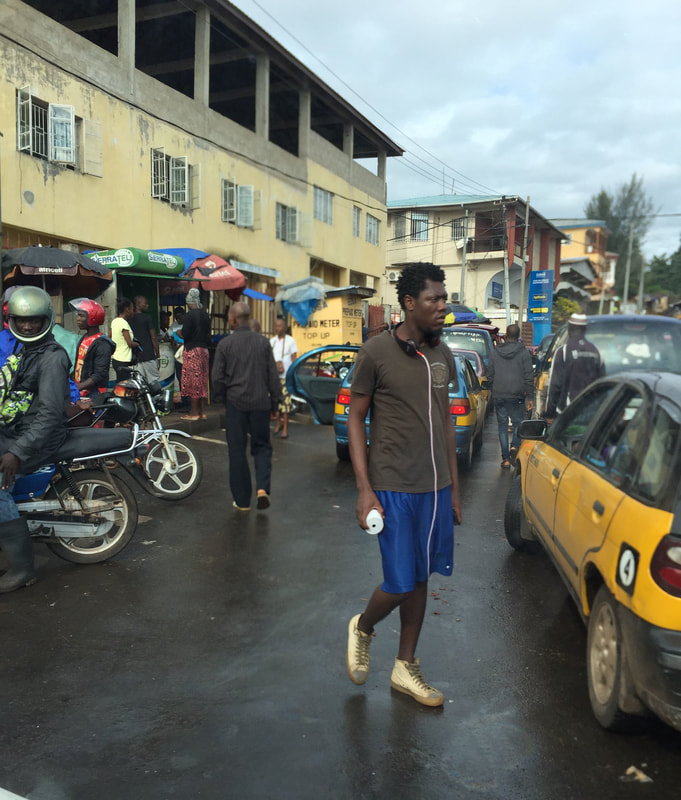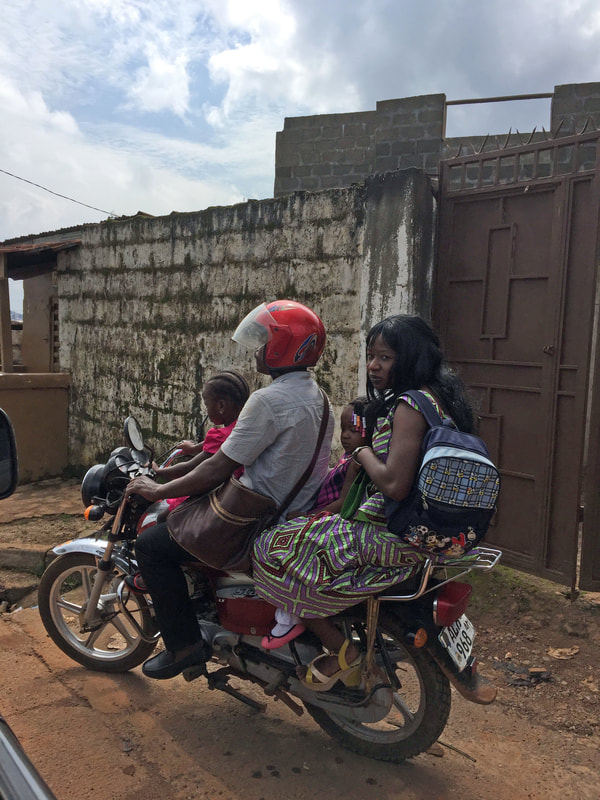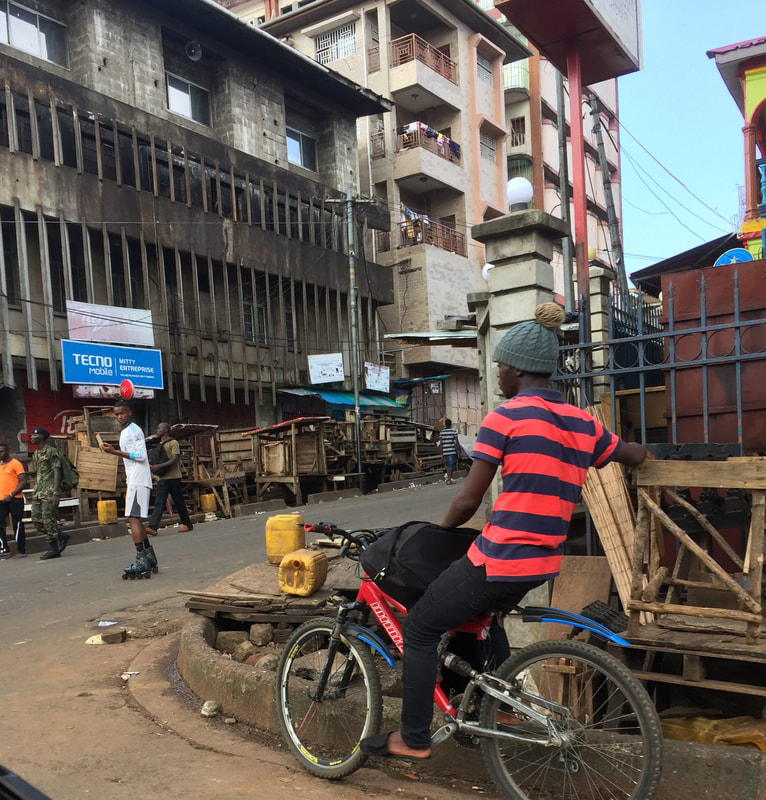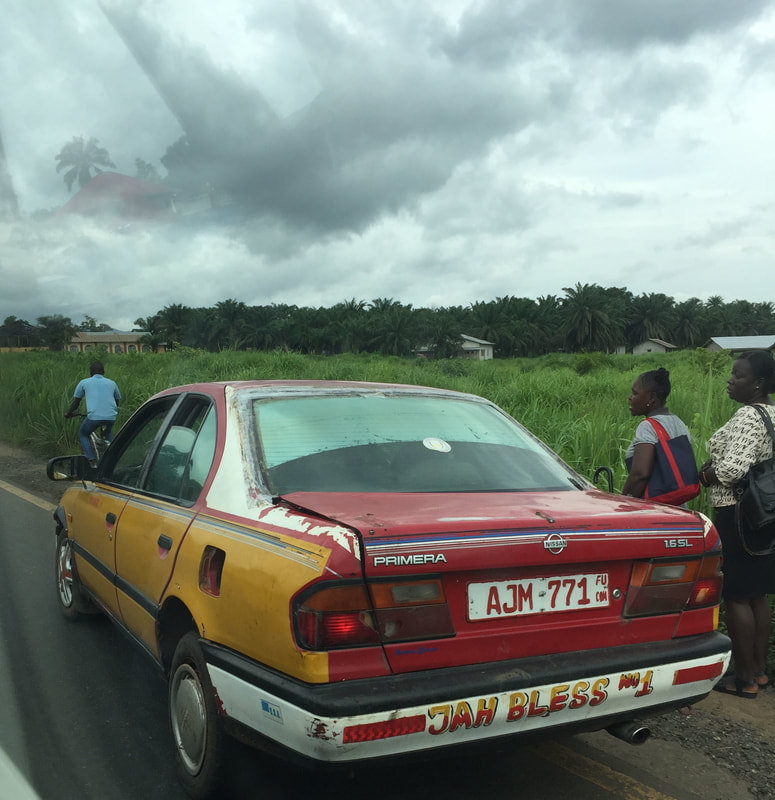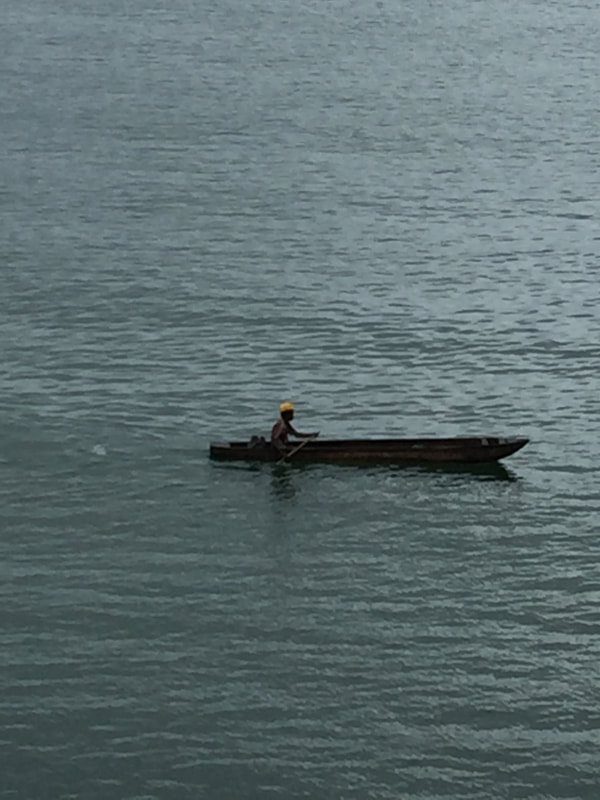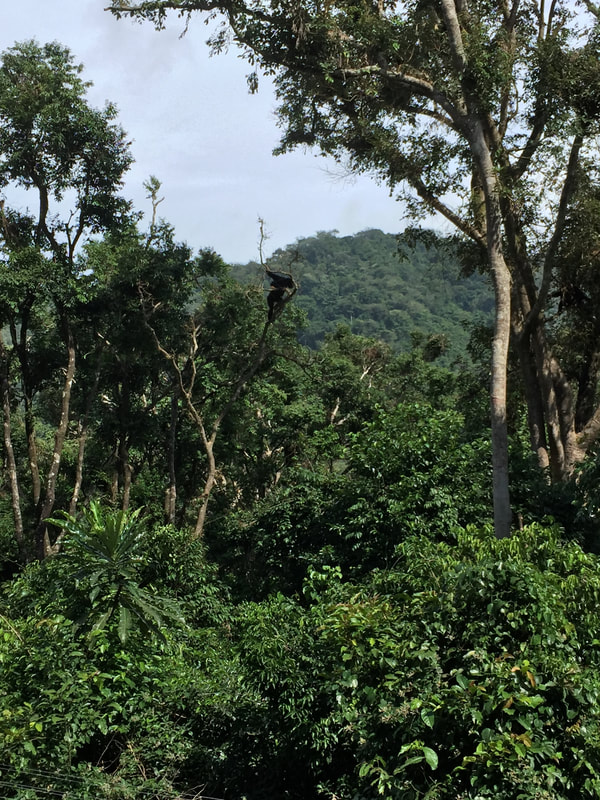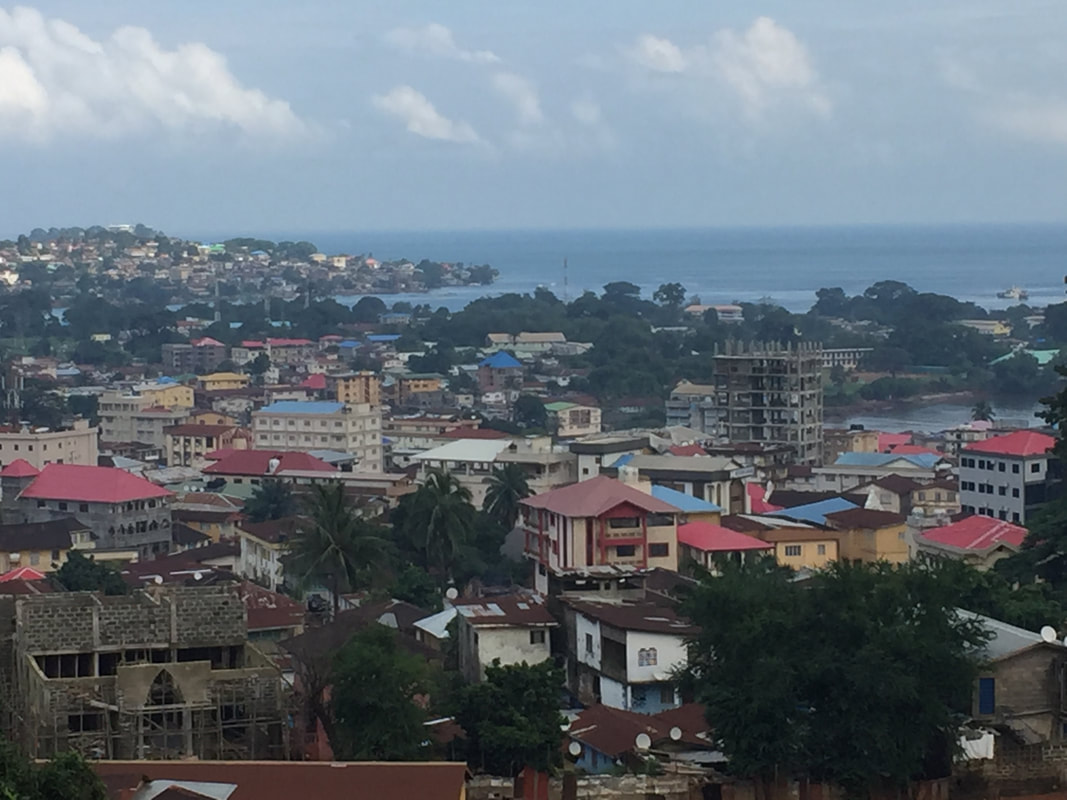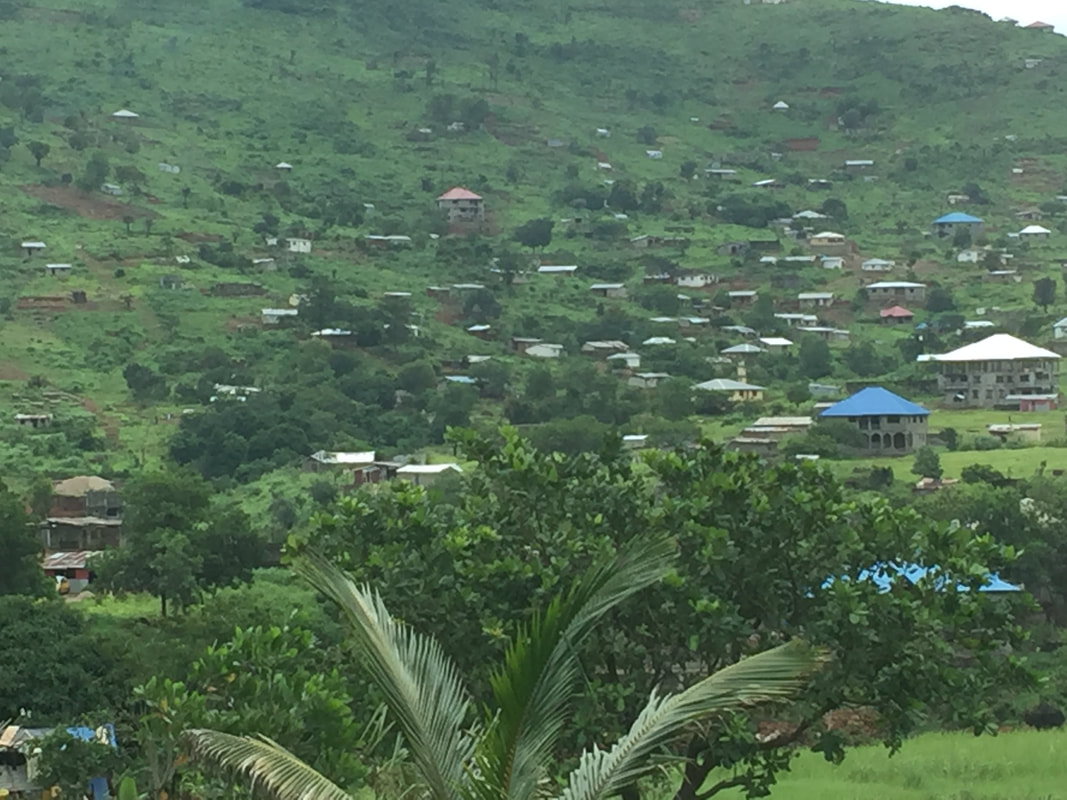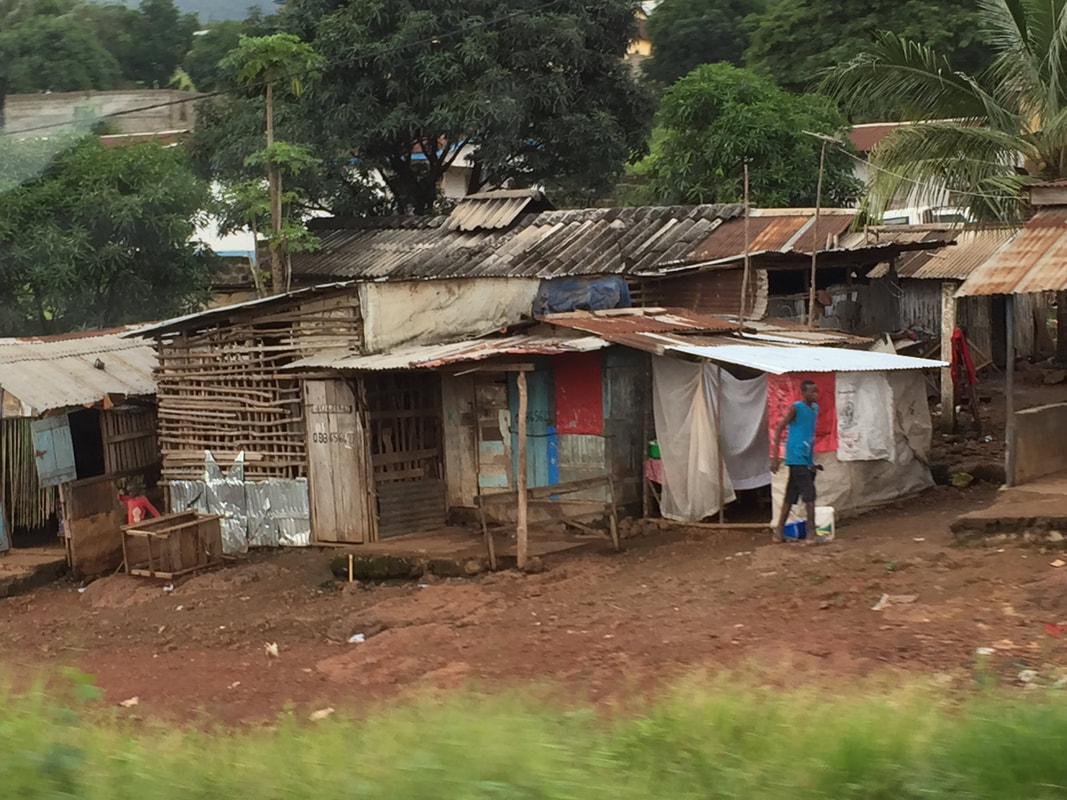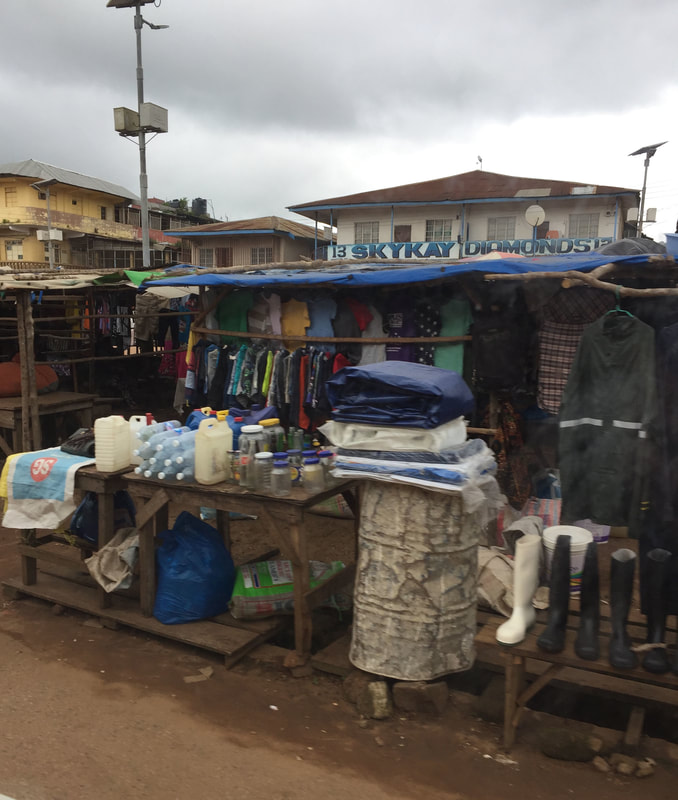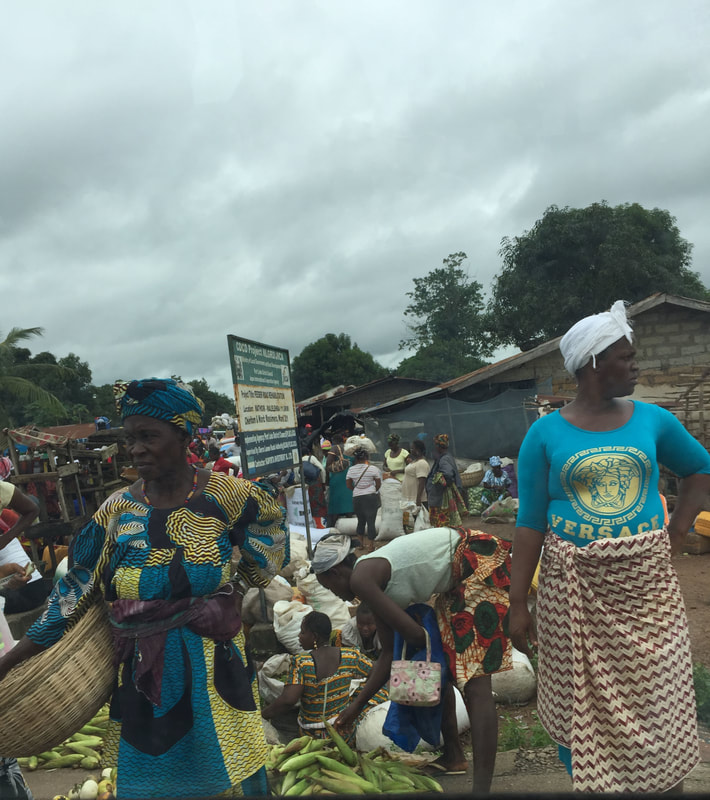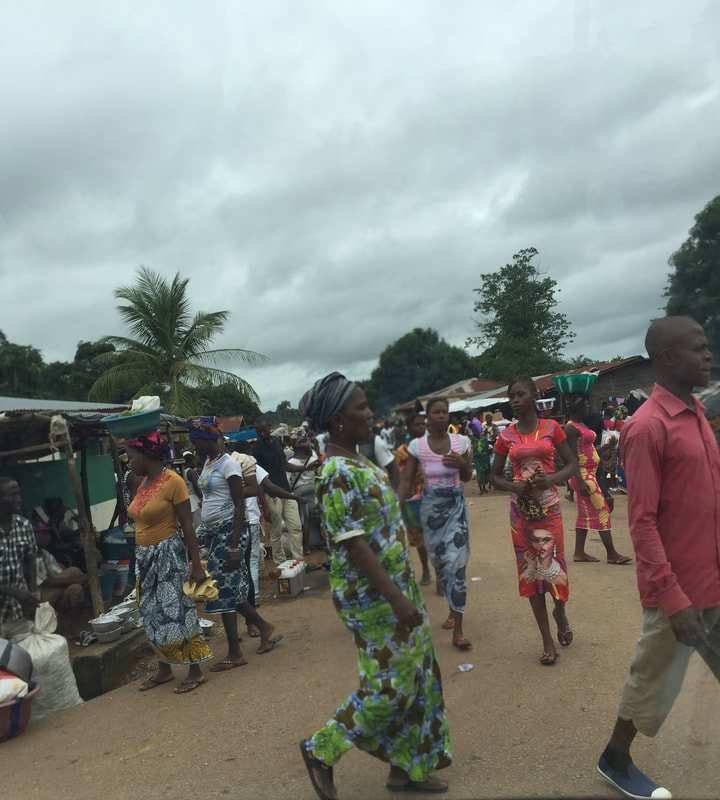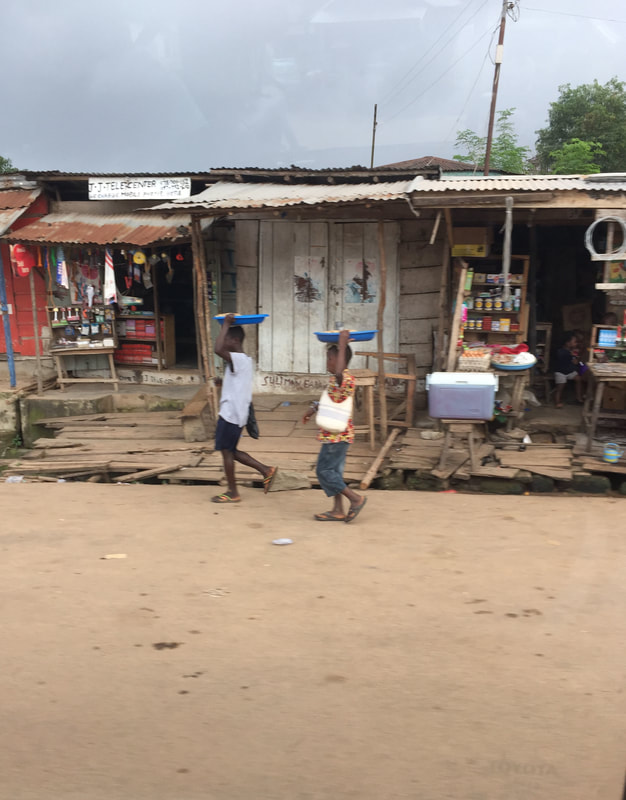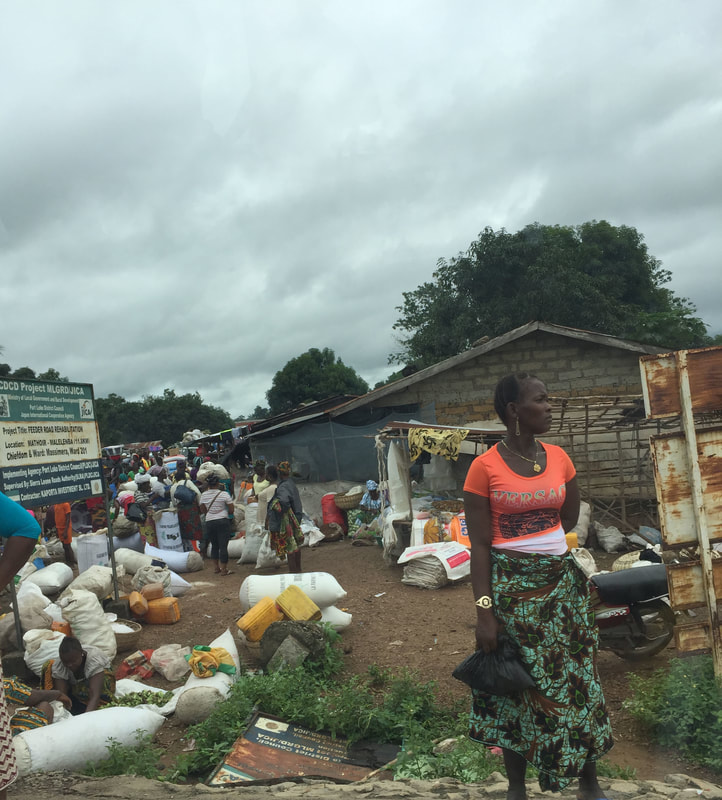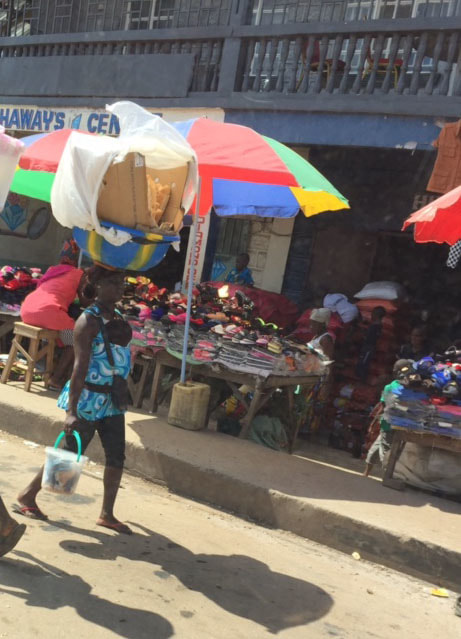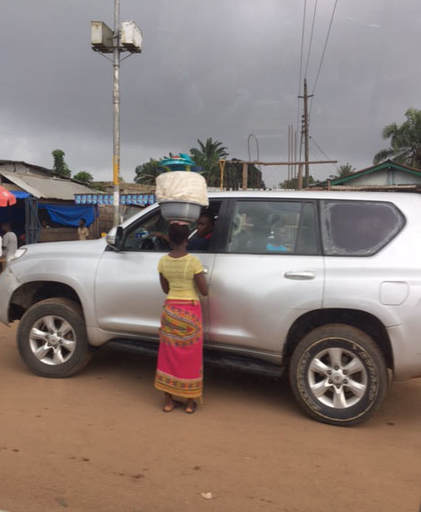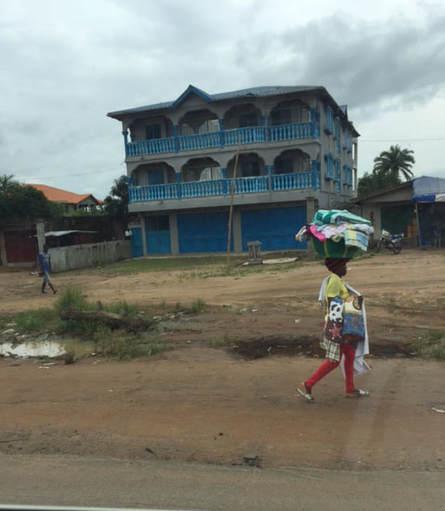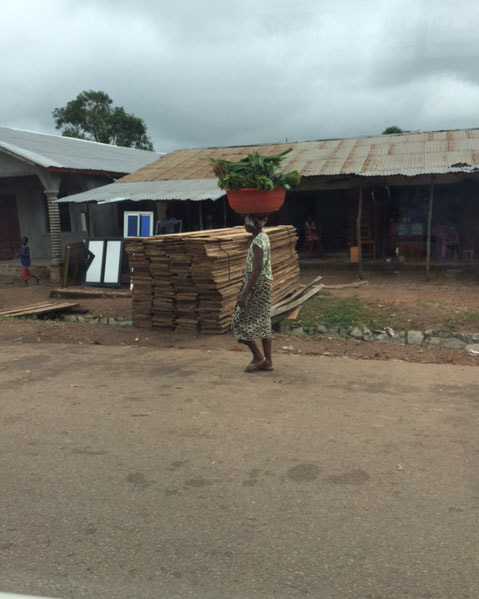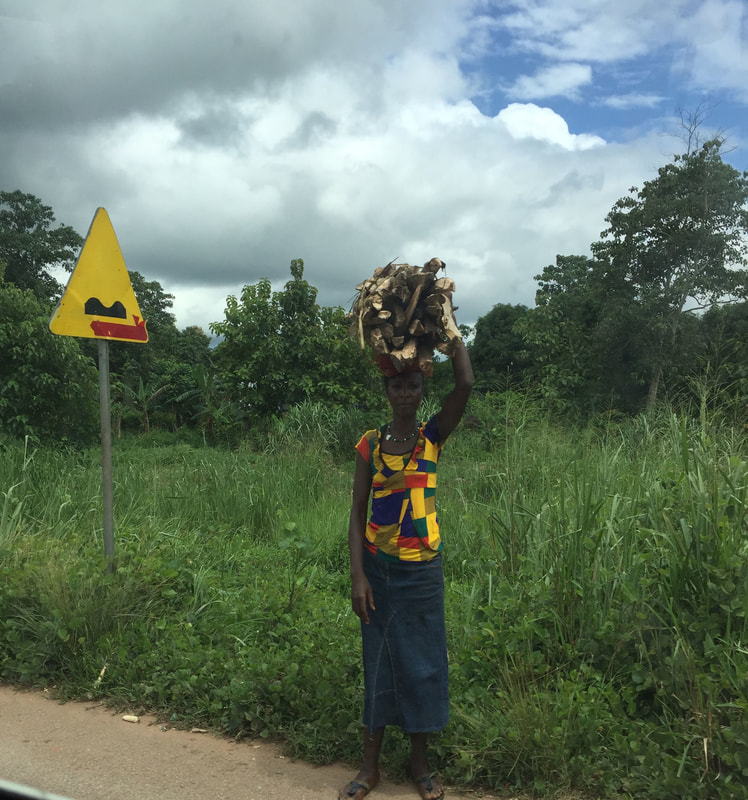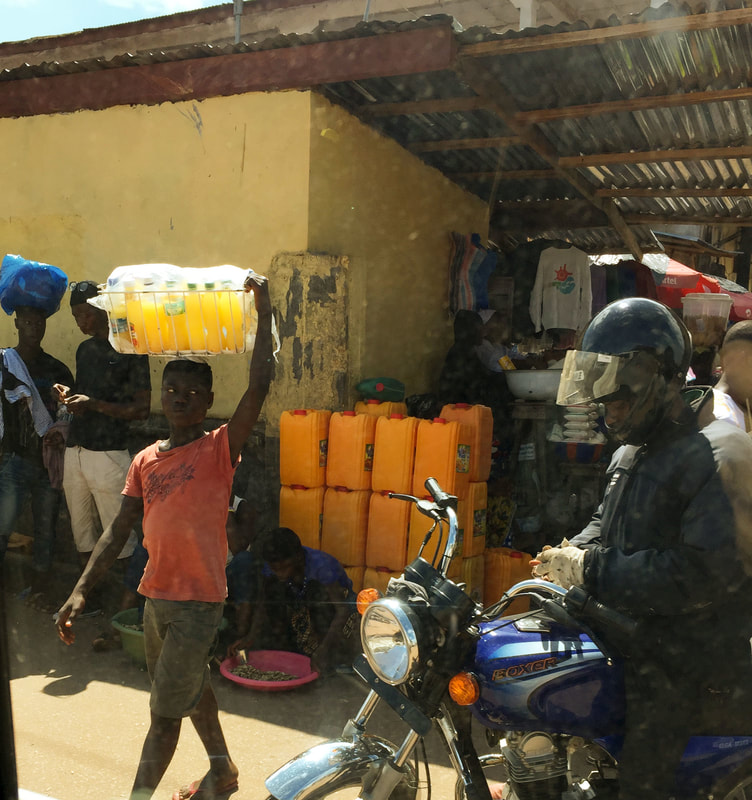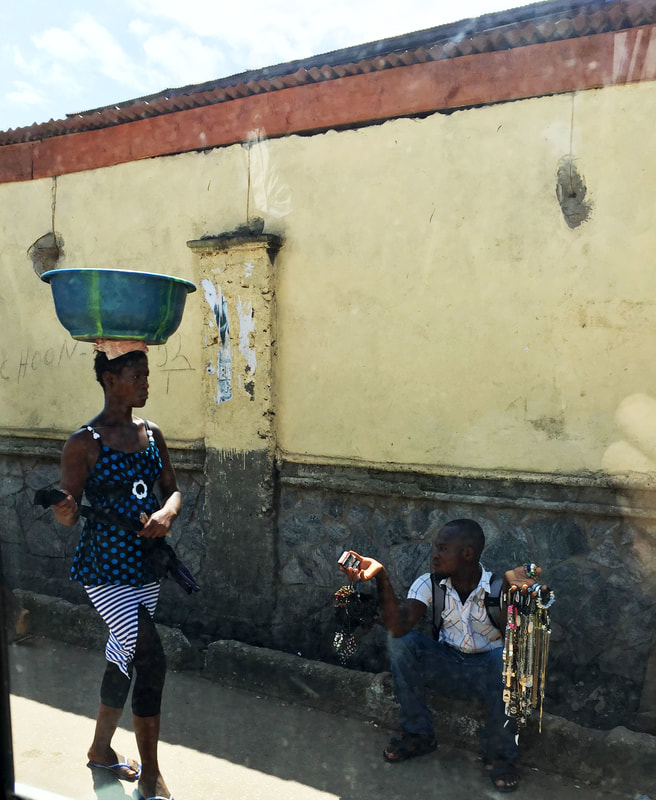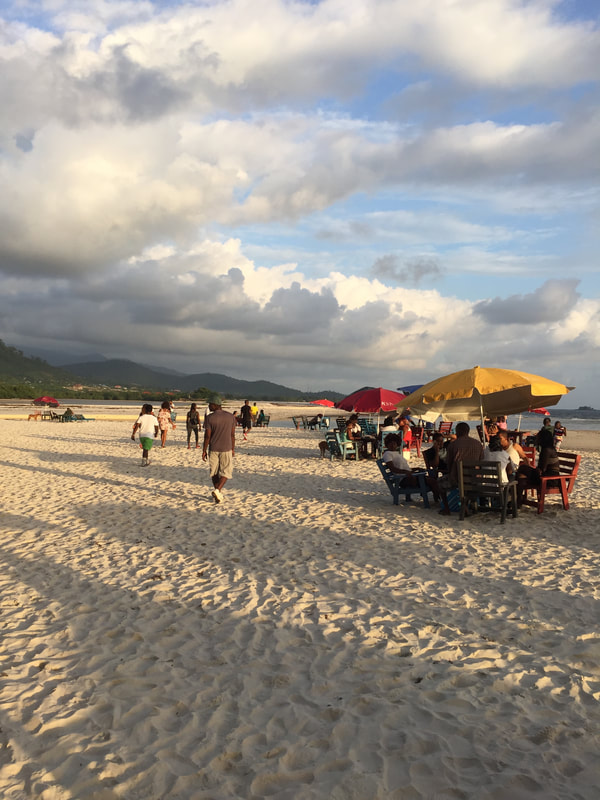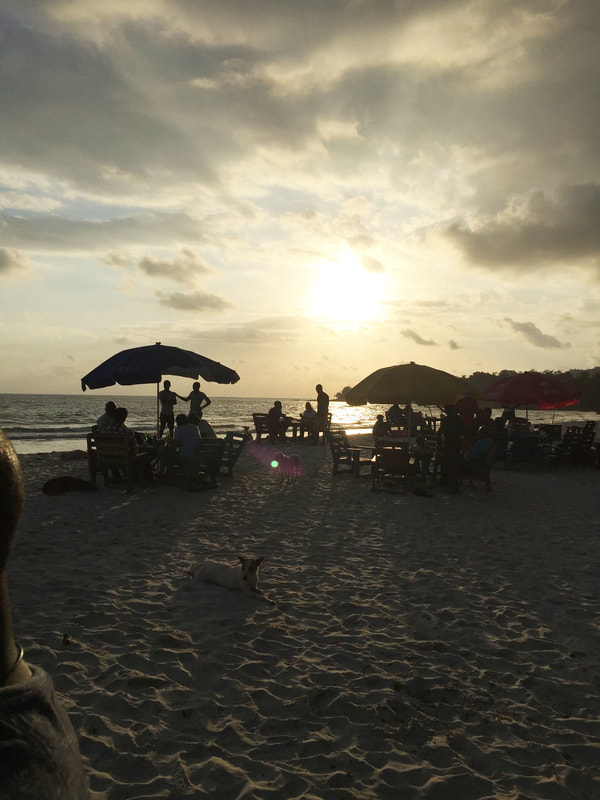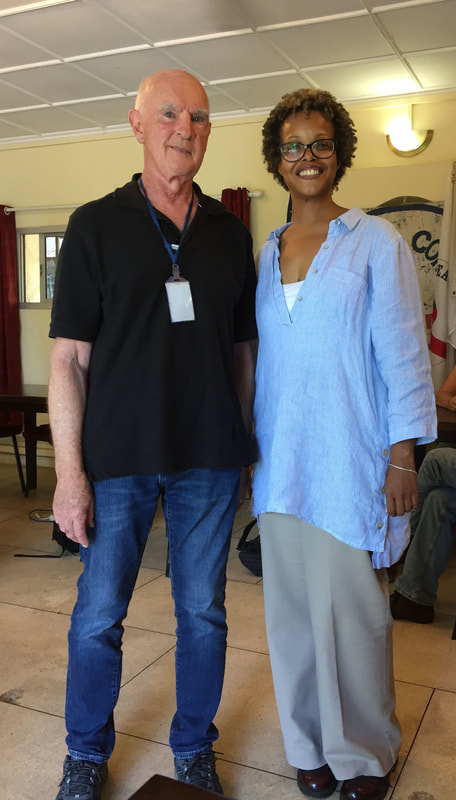In 1967 I went to Sierra Leone as a Peace Corps Volunteer to teach at the Technical Institute in Kenema, a city of about 20,000 inhabitants. Years later, in 2013, I published a memoir of that 2-year experience, Softball, Snakes, Sausage Flies, and Rice. In 2017, I revisited Sierra Leone and Kenema for the first time since 1969. This site includes photographs and writings from this trip.
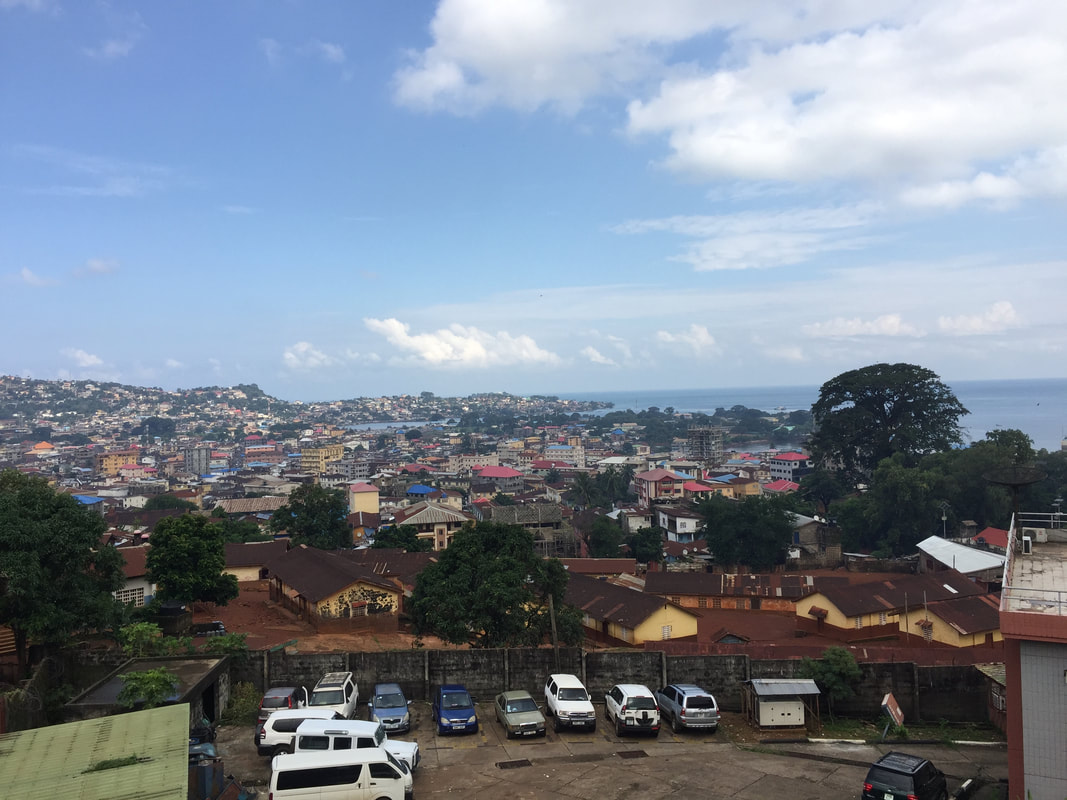
The story starts in Freetown, seen here from just above the Cotton Tree
Freetown, the capital of Sierra Leone, is often symbolized by the Cotton Tree, which is said to be more than 400 years old, predating the arrival of the British navy and before them, the first Portuguese explorers. Freetown has one of the largest natural harbors in the world, providing a haven for sailing ships. It was this location that fostered exploitation of the people of Sierra Leone and its raw materials.
The Cotton Tree
The city is on the South Atlantic coast between a mountain and the ocean. Two main rivers carry water from the mountain, supplying the city’s population. Today it is home to more than 700,000 people. Its streets are clogged with the heavy traffic of cars, vans, trucks, motorcycles, motor scooters, bicycles, and pedestrians.
Motorcycles abound here for families on the move
Bicycles, too
Every Taxi has a Saying
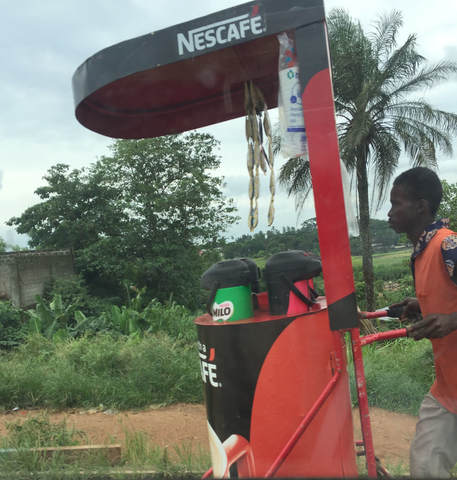
Coffee to Go!
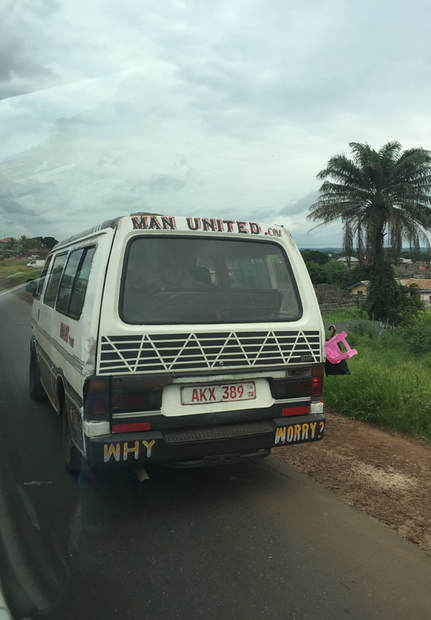
Vans are used to carry people, luggage, small animals, foodstuffs, and whatever the driver wants to add
Fish have always been a staple of the local diet. Many small boats carry a solitary
fisherman into the water in the morning.
fisherman into the water in the morning.
On the hill above the city lies a sanctuary for chimpanzees. It is one of the few places in the world that takes in any rescued animal. Each chimp is known by its name and is cared for by specialized veterinarians.
For more information and to support this endeavor, see Tacugama chimp sanctuary, www.tacugama.com
For more information and to support this endeavor, see Tacugama chimp sanctuary, www.tacugama.com
Housing comes in all shapes and sizes. One result of the population boom is the expansion of make-shift living arrangements in what used to be the green belt surrounding Freetown. After the civil war and the Ebola crisis, the city grew too rapidly to accommodate the influx with existing structures.
Below is what the green belt is becoming, house by house.
Below is what the green belt is becoming, house by house.
Shopping in the markets can be daunting for anyone
Then one has to take it home
There is a beach called River 2, just outside Freetown. It is a cooperative venture of the local village.
Visitors pay to park and can eat fresh fish cooked right on the spot.
In Freetown, I was fortunate to meet and talk with the newly assigned Peace Corps Director for all of Sierra Leone, Penny Alexander. She is so vibrant and energetic, and I'm certain that enthusiasm will be transferred to the volunteers in the country.
In Freetown, the organization, Friends of Sierra Leone, a wonderful group of people who get together to sponsor projects in Sierra Leone, and who travel back and forth, arranged several sessions with a local organization which serves young people who have physical limitations. They offer training and support. This group put on a dance program and had the audience join in.
The organization is One Family People - http://onefamilypeople.org/
